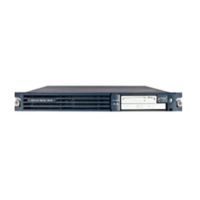Implementing Keychain Management on Cisco IOS XR Software
How to Implement Keychain Management
SC-78
Cisco IOS XR System Security Configuration Guide
What to Do Next
After completing keychain configuration, see the Configuring a Tolerance Specification to Accept Keys
section.
Configuring a Tolerance Specification to Accept Keys
This task configures the tolerance specification to accept keys for a keychain to facilitate a hitless key
rollover for applications, such as routing and management protocols.
SUMMARY STEPS
1. configure
2. key chain key-chain-name
3. accept-tolerance [value | infinite]
4. end
or
commit
Step 3
end
or
commit
Example:
RP/0/RP0/CPU0:router(config-isis-keys)# end
or
RP/0/RP0/CPU0:router(config-isis-keys)# commit
Saves configuration changes.
• When you issue the end command, the system prompts
you to commit changes:
Uncommitted changes found, commit them before
exiting(yes/no/cancel)?
[cancel]:
–
Entering yes saves configuration changes to the
running configuration file, exits the configuration
session, and returns the router to EXEC mode.
–
Entering no exits the configuration session and
returns the router to EXEC mode without
committing the configuration changes.
–
Entering cancel leaves the router in the current
configuration session without exiting or
committing the configuration changes.
• Use the commit command to save the configuration
changes to the running configuration file and remain
within the configuration session.
Step 4
show key chain
key-chain-name
Example:
RP/0/RP0/CPU0:router# show key chain isis-keys
(Optional) Displays the name of the keychain.
Note The key-chain-name argument is optional. If you do
not specify a name for the key-chain-name
argument, all the keychains are displayed.
Command or Action Purpose

